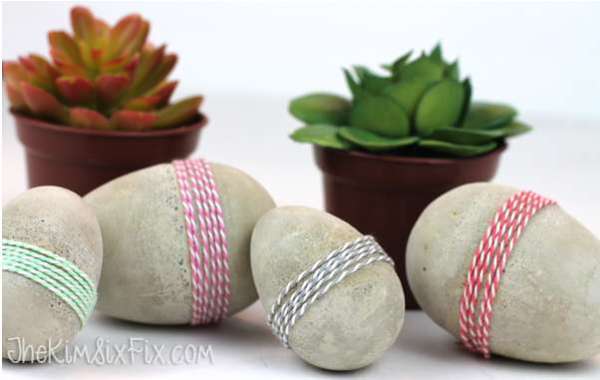
Easter is just around the corner, and it’s the perfect time to get creative with your egg decorating! While there are plenty of traditional ways to decorate eggs, such as dyeing them or using stickers, have you ever considered using concrete to make some unique and unconventional Easter eggs?
Concrete Easter eggs may not be the first thing that comes to mind when you think of Easter decorations, but they can make for an interesting and eye-catching display. To make concrete Easter eggs, you’ll need some plastic Easter egg molds, concrete mix, and some patience. First, mix the concrete according to the package instructions and pour it into the molds. Let the concrete dry and set, which may take several hours or even overnight. There are full instructions a little later at the blog post of Kim Six Fix.
Once the concrete Easter eggs are dry, you can decorate them in a variety of ways. You could use paint or markers to add colorful designs or patterns to the surface. Alternatively, you could wrap them in twine or ribbon, or even use decoupage to add printed designs, which is what Kim has done.
One another fun idea is to turn your concrete Easter eggs into planters. Simply use a drill or hammer and nail to make a small hole in the top of the egg and fill it with soil and a small plant. These unique planters can add a touch of greenery to your Easter decor.
Concrete Easter eggs may not be for everyone, but they’re a great option for those who are looking for something different and creative. They’re also a fun project to do with kids, who will love getting messy and making something unique. Try making some concrete Easter eggs this year and see how they turn out? Who knows, they might just become your new favorite Easter decoration!
For my point of view, I’m sure most of us think of Easter decor as being cute and fluffy but I have to say these concrete eggs with just a bit of colored string as an embellishment call to me as a modern festive Easter decoration. You too?
If you are looking for some step by step direction, they are pretty easy to make using the tutorial on how to make concrete Easter eggs featured at the blog The Kim Six Fix.
